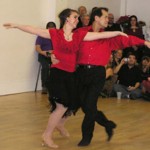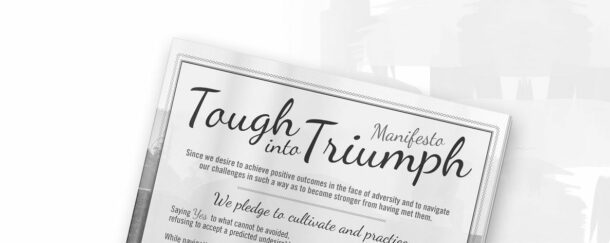My friend Jim was a good son. A professor of religion at the university where we both worked, he was in his early 60’s. His mother Margaret was a widow in her early 80’s who loved to dance so Jim took her ballroom dancing twice a month. Jim’s wife was a nurse who worked the night shift at the Miller Brewery on the edge of town, so there was no conflict of interest in his loyalty to the two women in his life.
The dance craze of the early 1980s was the Hustle, (think Saturday Night Fever). Margaret was a hip grandmother as she moved onto the  dance floor stepping on every beat of the music. Her shimming fringe-layered red dress provided a still remembered dramatic image as she and Jim became the center of everyone’s attention.
dance floor stepping on every beat of the music. Her shimming fringe-layered red dress provided a still remembered dramatic image as she and Jim became the center of everyone’s attention.
At that time in our community, in order to ballroom dance frequently, you needed to be a member of a ballroom dance club that rented a hall and a band once a month. In order to be accepted as a member, you had to have a sponsor and fill out an application detailing what dances you and your partner were proficient in. Margaret was a member of two clubs and she agreed to sponsor us. At that point in our dancing career we did what could be called “fake dancing,” walking or stepping to the music and imitating what the other more skilled dancers appeared to be doing. “I hope we don’t embarrass Margaret,” my husband said as we filled out the forms.
It didn’t take long for us to realize that, in our 30s and 40s, we were among the youngest of the dancers. “These people have discovered the fountain of youth,” I said as I struggled to keep up with dancers a generation or so older than myself.
Years later, in studying how the body influences the mind, now called, “Embodied Cognition,” I have come to understand why dancing helps keep us not only happier, but smarter. Our brain constantly rewires its neural pathways as needed. And dancing requires and creates new pathways, building in a redundancy that overcomes brain diseases like Alzheimer’s.
A 21-year study of senior citizens, 75 and older, at the Albert Einstein College of Medicine in New York and reported in the New England Journal of Medicine, set out to see if any physical or cognitive activities would influence mental acuity. The only physical activity they found that made a difference was frequent dancing. The study did not say what kind of dancing but Robert Powers, a dance historian concluded that these people would have been doing social dances learned in their youth, like swing, foxtrot, and waltz. These partner dances involve split second decision-making, which is part of what creates new neural pathways. And according to Fred Astaire, who advised dancers to “Cultivate flexibility,” by blending with their partner, dancing provide opportunities to learn socially from others. http://socialdance.stanford.edu/syllabi/smarter.htm

